- Home
- Multimedia
- Photo Gallery
- 50 Years of Hip-Hop: How a generation fostered creativity from urban despair and racial barriers
50 Years of Hip-Hop: How a generation fostered creativity from urban despair and racial barriers
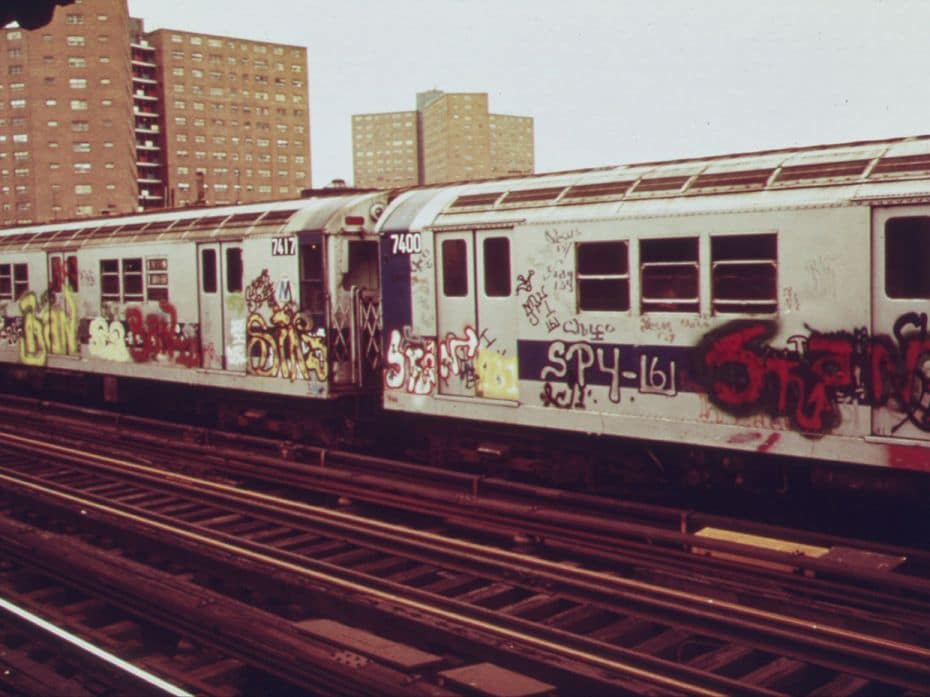
Image by : Courtesy National Archives via Smith Collection/Gado/Getty Images
A subway car marked with extensive graffiti tags passes through a station, New York, May 1973. The fourth foundational element—other than DJing/turntabling, MCing/rapping, and B-boying/breaking—that characterised hip-hop culture was graffiti painting. Originating in the late 60s, graffiti was catalysed by the invention of the aerosol spray can. Early graffiti artists wrote simple "tags" or stylised signatures intending to tag as many locations as possible with letters, numbers or even symbols.
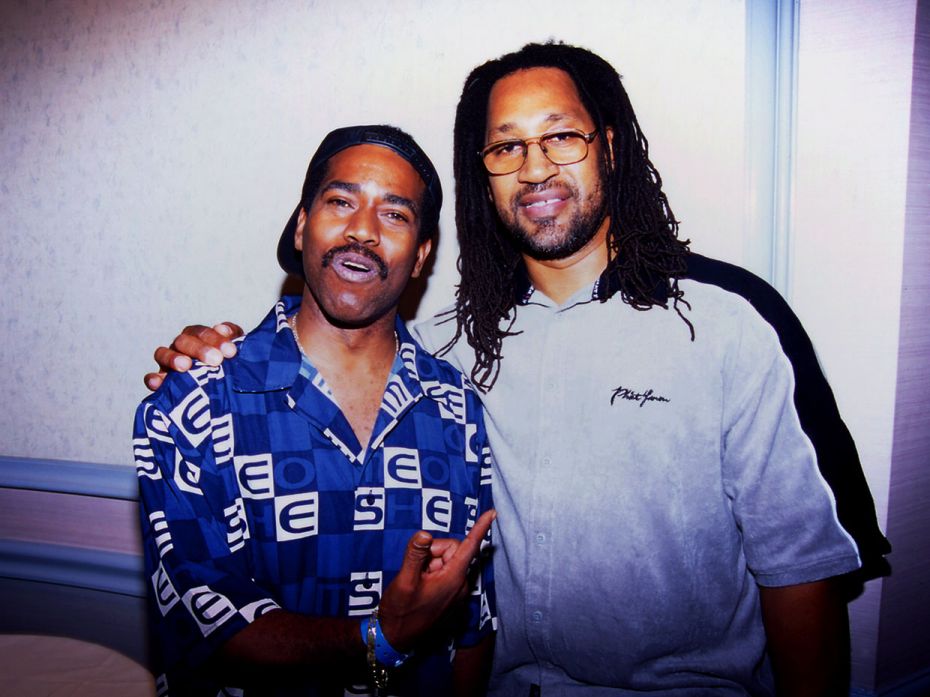
Image by : David Corio/Michael Ochs Archives/Getty Images
A file photo of the pioneering DJ Kool J Herc (right) and Kurtis Blow, whose iconic hip-hop dance track 'The Breaks', introduced audiences to underground hip-hop sound, Circa 1980. The sound was birthed in the Bronx by Kool Herc, who introduced the breakbeat technique—playing two copies of the same record on turntables and then switching between them to extend the percussive section known as the break. It was the most anticipated part of a song. Break-dancers would save their best dance moves for the break. Herc would also say short rhyming phrases over the beats, which is now a rich musical culture with all its diction and complexity.
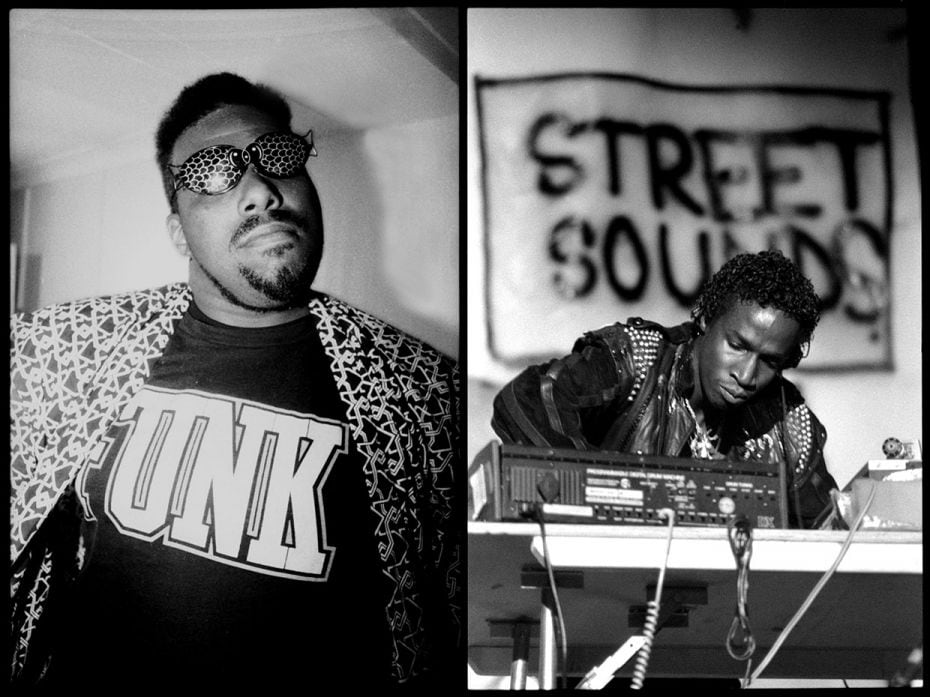
Image by : David Corio/Michael Ochs Archives/Getty Images
Grandmaster Flash (right) and Afrika Bambaataa, circa 1980, are the other pioneering DJ and music producers who make up the Hip Hop trinity along with Kool Herc. They organised block parties in the Bronx during the late 1970s. With the release of the first rap records, a do-it-yourself urban culture was born where DJs replaced bands and kids expressed themselves by crafting intricate rhymes to flow over the records' beats.
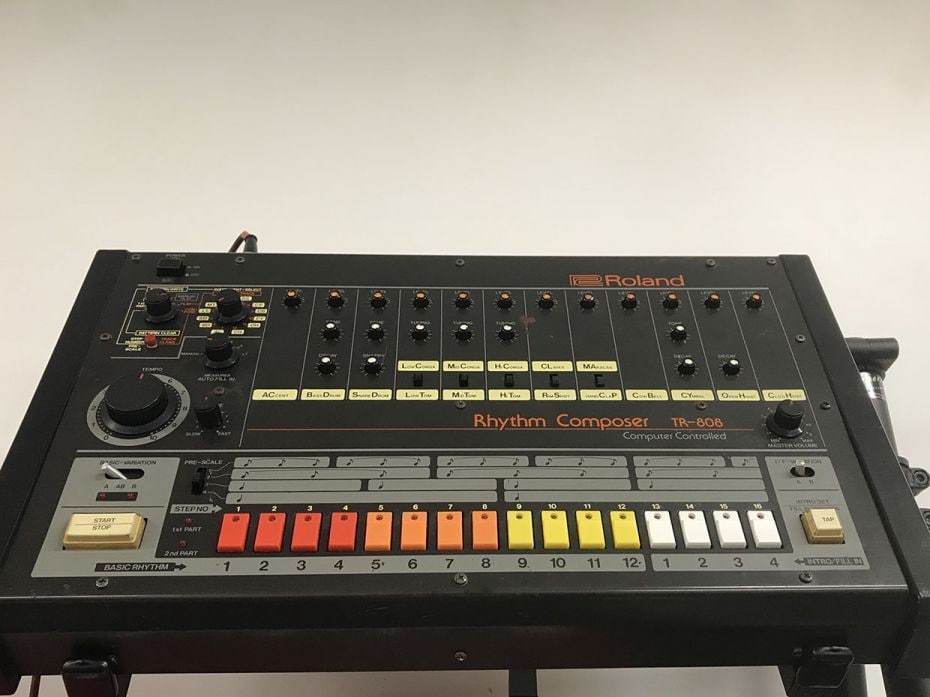
Image by :
A Roland TR808, the staple of early hip-hop music for its powerful bass drum sound. Instead of relying on DJ breakbeats, music producers could now program original drum patterns with a TR808. Sampling technology also emerged as DJs experimented with them, using them to piece together breaks in songs rather than using turntables, techniques that were an early form of remixing.
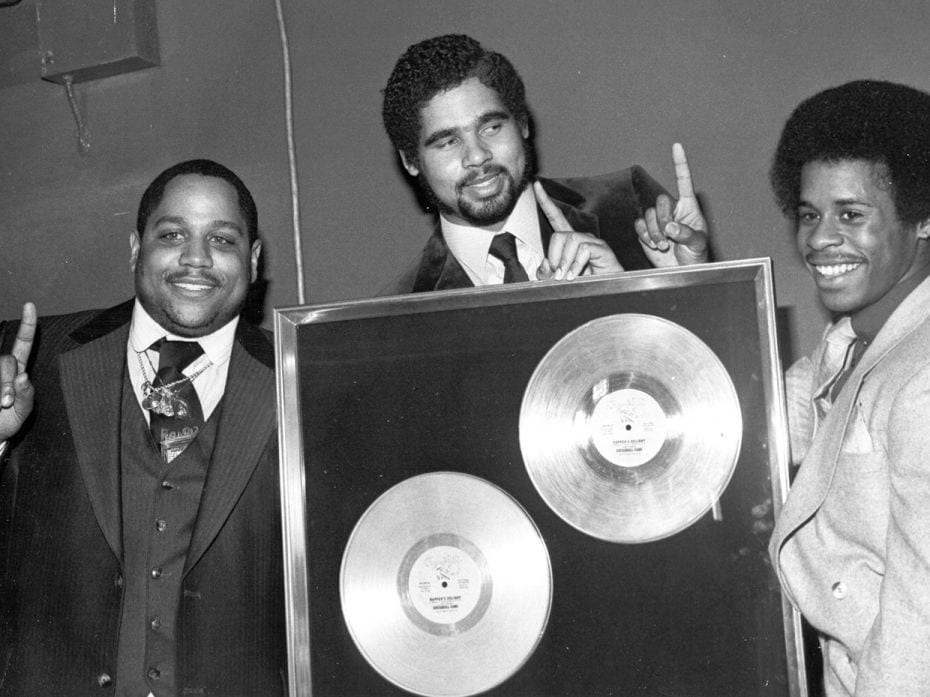
Image by : Michael Ochs Archives/Getty Images
Rap pioneers the Sugar Hill Gang (L-R Big Bank Hank, Wonder Mike and Master G) receive their gold record for the song 'Rapper's Delight' circa 1980. Rap first came to national prominence in the US with the release of the song on the independent African-American-owned label Sugar Hill. It became a chart-topping phenomenon within weeks of its release and was named a new genre.
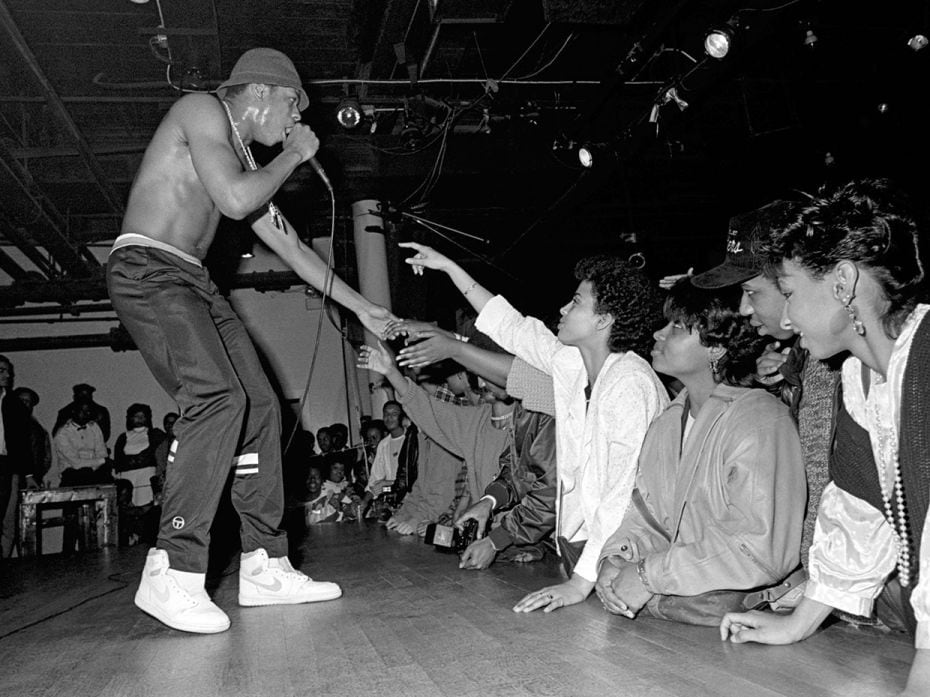
Image by : John Nordell/Getty Images
American rapper, songwriter, record producer, and actor LL Cool J, performs on stage in Boston, Massachusetts, in December 1985. Def Jam, an Independent record label, signed LL Cool J, rap's first romantic superstar. Record labels like Def Jam recognised the genre as an emerging trend and invested a lot of money into the movement.
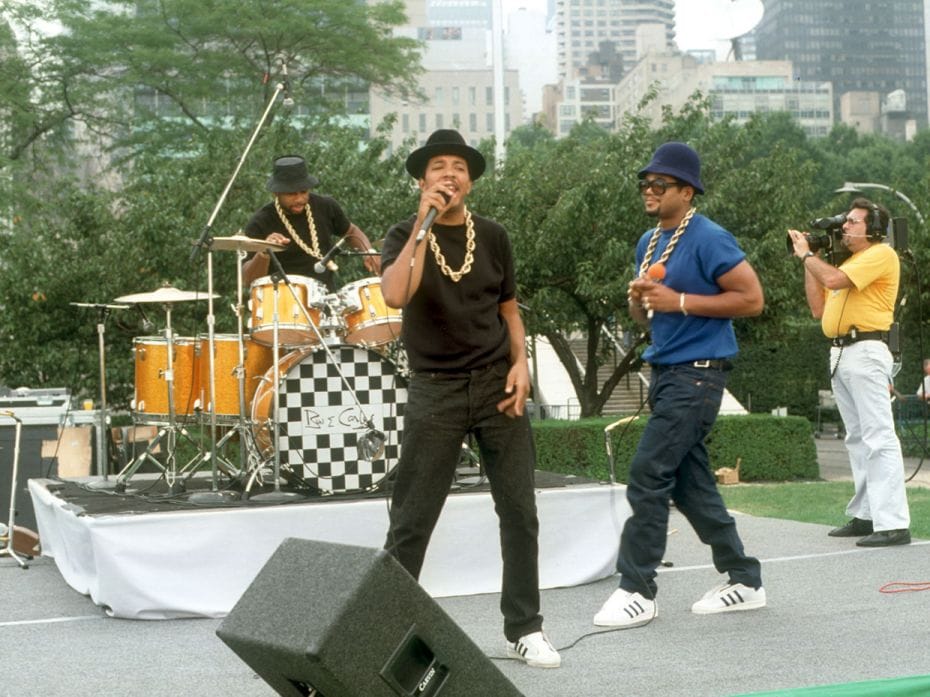
Image by : Michael Ochs Archives/Getty Images
American hip-hop band Run-DMC, circa 1985. A hip hop trio who fused rap with hard rock, Run-DMC were part of a wave of new school rappers whose single "Walk This Way"—and their hip style of dressing—conquered radio and MTV, catapulting rap into the mainstream.
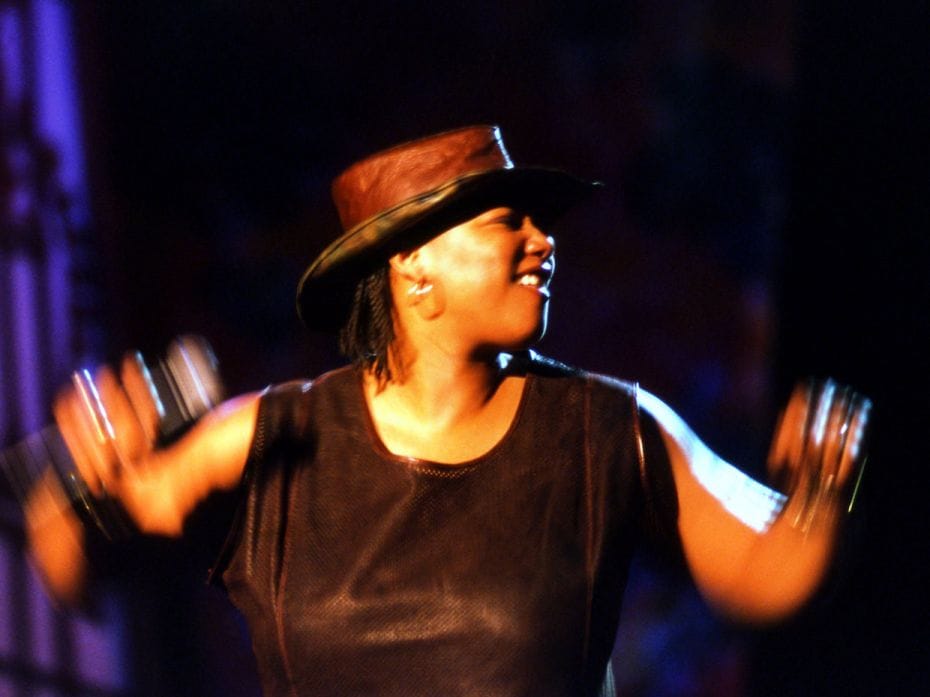
Image by : David Corio/Michael Ochs Archives/Getty Images
Queen Latifah Circa 1980. Queen Latifah made her mark by bringing rap closer home by offering an alternative to rap's predominantly male, often misogynistic viewpoint. Her songs spoke of issues faced by a black woman every day—domestic violence, harassment on the streets. Her seminal 1994 anthem, 'UNITY', earned her the first rap Grammy awarded to a woman. Her success in music in the late 1980s launched a wave of female rappers who deify her to date.
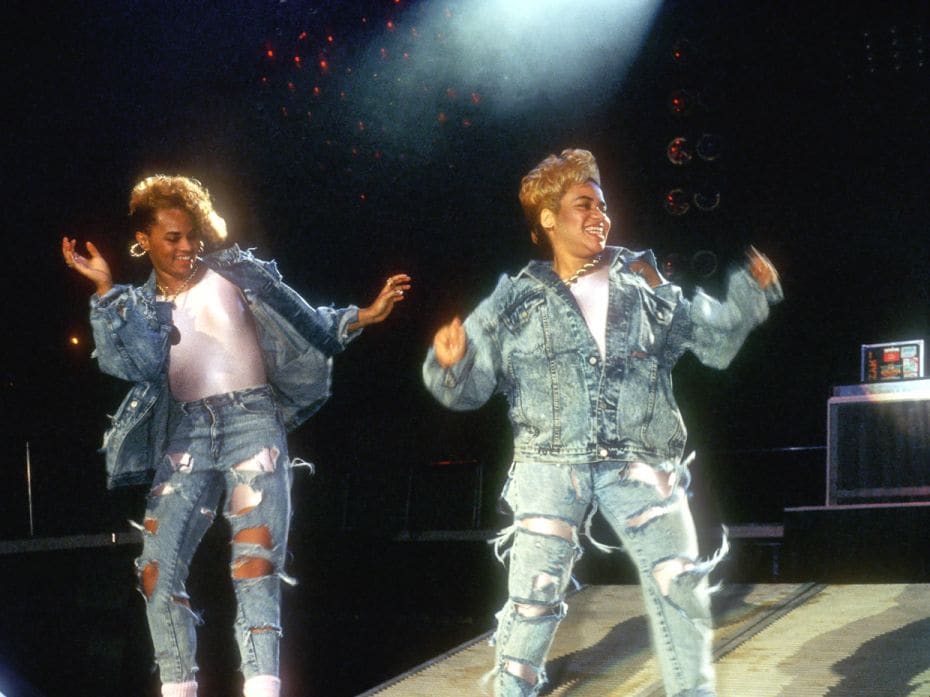
Image by : Michael Ochs Archives/Getty Images
Salt n Pepa in concert, circa 1988. In 1987, the hip-hop duo Cheryl James and Sandra Denton recruited Deidre Roper to join them as DJ Spinderella and sprung a new name Salt n Pepa and a new single 'Push It' that wrote the group into history as the first female hip-hop act to hit platinum status. Salt n Pepa took on rap machismo, slut-shamers and smooth-talkers with their sensuality-saturated albums that had become the most successful by a female act.
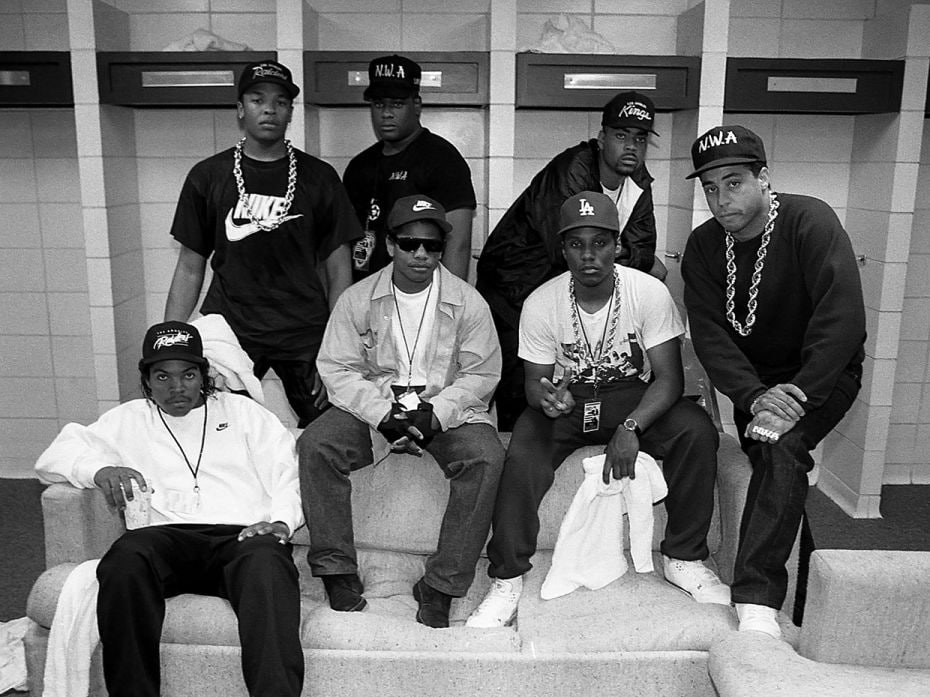
Image by : Raymond Boyd/Getty Images
The rap group NWA—Ice Cube, Eazy-E, MC Ren. DJ Yella (front), and Dr Dre, Laylaw and The DOC (rear)—pose for photos during their 'Straight Outta Compton' tour in Kansas City, Missouri, in June 1989. The group emerged from the mean streets of Compton in Los Angeles, California, in the mid-1980s and revolutionised hip-hop culture with their brutal musical tales about life in the hood. Each of these rappers had started in the streets, where everyone around them was either selling or buying some sort of drug and being involved with gangs.
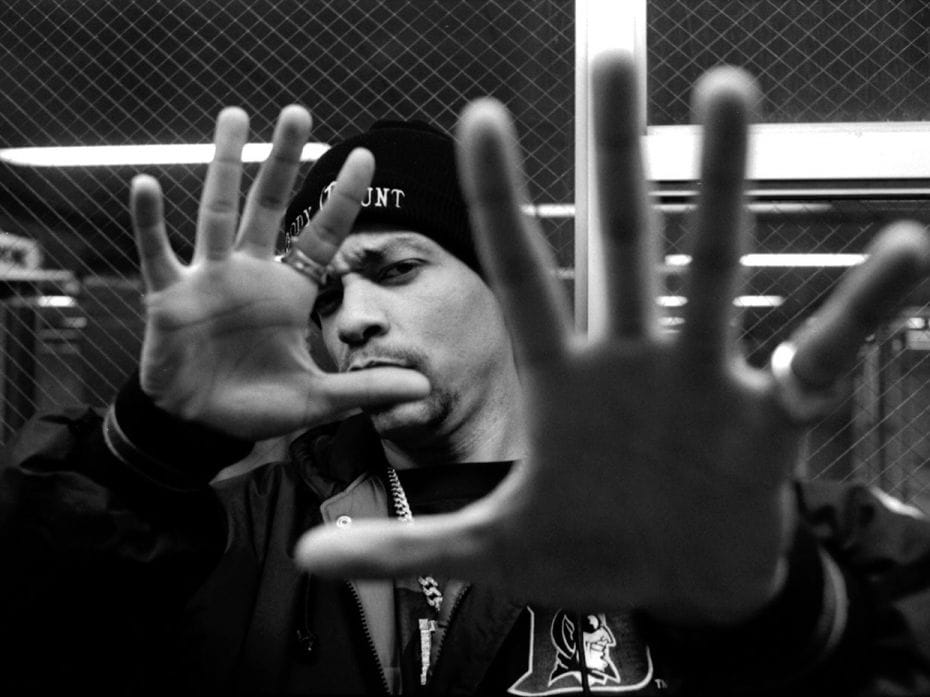
Image by : David Corio/Michael Ochs Archives/Getty Images
Rapper Ice T at the 57th Street subway station on February 15, 1993, in New York City. Los Angeles rappers like Ice T and NWA, reacting to the New York brand of hip hop, led to the rise of the genre known as Gangsta rap. Ice T's 1992 single "Cop Killer" from the album Body Count, about a criminal getting revenge on racist, brutal cops, ignited a national controversy, leading to a protest by police advocacy groups in the US.
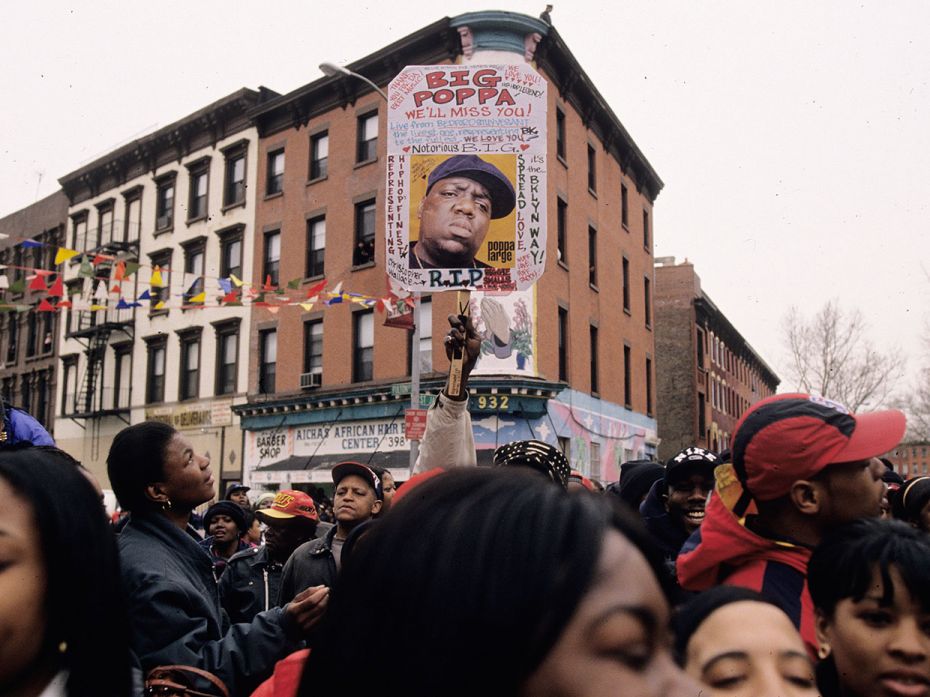
Image by : Andrew Lichtenstein/Corbis via Getty Images
Police, neighbours, and fans follow the funeral caravan for rap artist Notorious BIG as it passes the Brooklyn neighbourhood of Clinton Hill, where he grew up, dropped out of school, sold drugs, and first started rapping. Among the most influential artists of 1990s gangsta rap, Biggie's rapid success was credited with single-handedly reviving the N Y-based "East Coast" hip-hop recording labels, which had until then been overtaken in prominence by the "West Coast" hip-hop labels based in Los Angeles. He was killed in a drive-by shooting in Los Angeles on March 9, 1997.
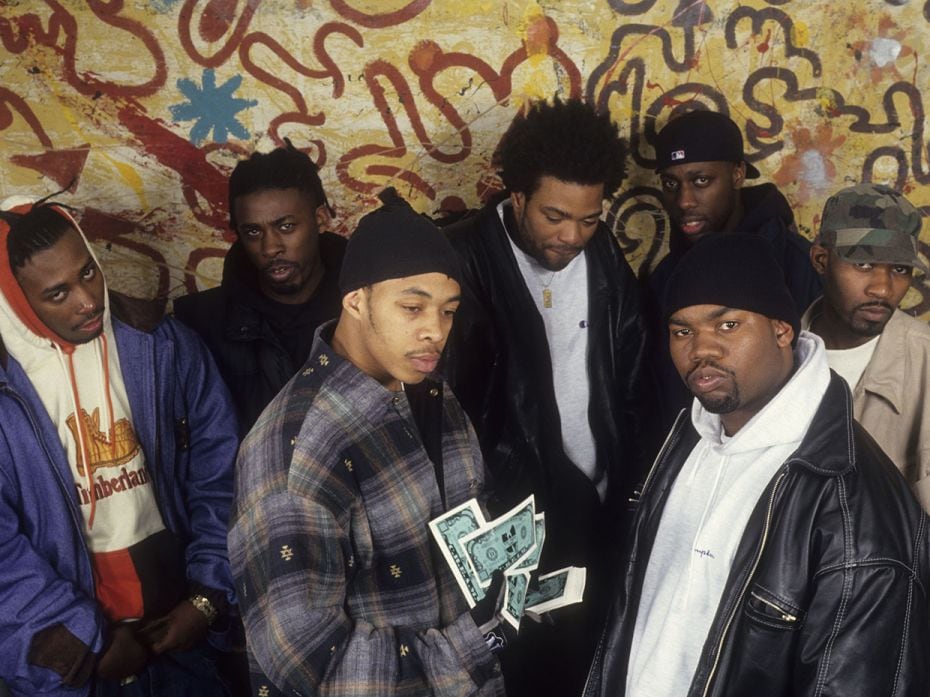
Image by : Al Pereira/Michael Ochs Archives/Getty Images.
Rap group The Wu-Tang Clan ( L to R: Ol' Dirty Bastard; GZA; U-God; Method Man; Raekwon; Masta Killa; Inspectah Deck) in New York City on April 1, 1994. The Staten Island-based clan's combination of street credibility, neo-Islamic mysticism, and kung-fu lore made them one of the most complex groups in the history of rap. A defining aspect of hip-hop was the heavy use of sampled music from various genres ranging from jazz to rock, since no copyright laws protected music from being sampled then. The clan went a step further, sampling sound clips from their collection of 1970s Kung Fu films!
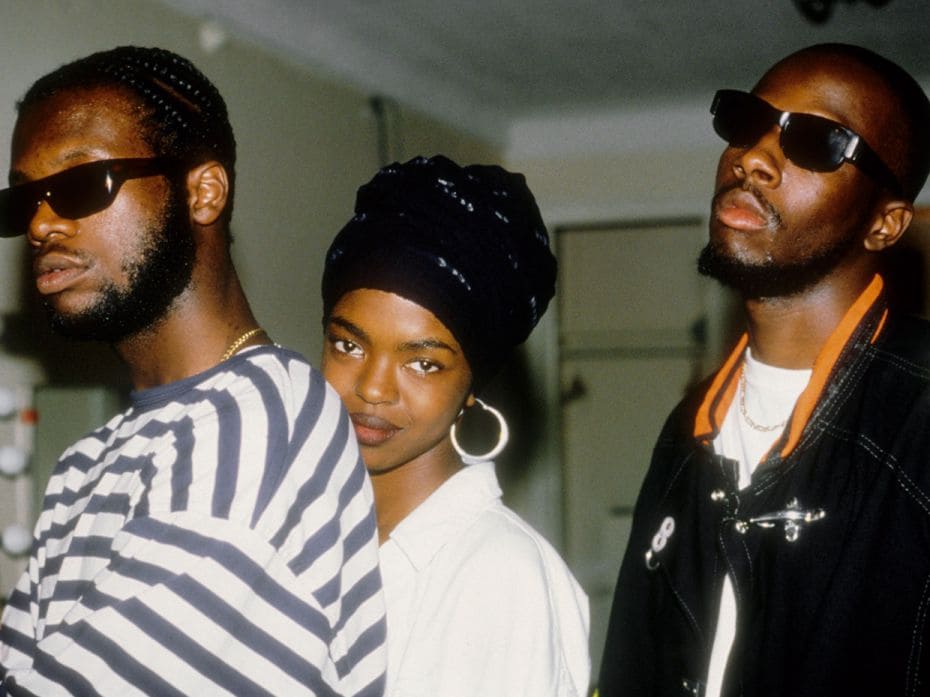
Image by : Al Pereira/Michael Ochs Archives/Getty Images
The Fugees (L-R Wyclef Jean, Lauryn Hill and Pras Michel) backstage at the Manhattan Center in 1993 New York City. This hip-hop act rose to prominence as an alternate act in the mid-1990s, widening the scope of hip-hop with its fusion of soul, reggae, and funk, eschewing gangsta rap. The Score, released on February 13, 1996, turned the trio into global superstars.
![Outkast [Dre (Andre Benjamin) and Big Boi (Antwan Patton)] performing at the Theater at Madison Squa Outkast [Dre (Andre Benjamin) and Big Boi (Antwan Patton)] performing at the Theater at Madison Squa](https://stgimages.forbesindia.com/media/photogallery/2023/Jul/15-gettyimages-461908717_bg_20230721033500_930x584.jpg)
Image by : Hiroyuki Ito/Getty Images
Outkast [Dre (Andre Benjamin) and Big Boi (Antwan Patton)] performing at the Theater at Madison Square Garden on March 9, 2001. Hip-hop's creative centre moved to the American South in the early 2000s, with artists like T.I, Lil Wayne and the increasingly experimental OutKast with their blend of gritty Southern soul, fluid raps, and the low-slung funk. The six Grammy Awards over 25 million records sold haven't stopped the critical acclaim for their Aquemini and Stankonia albums, not to mention the wild neo-psychedelic outfits on stage.
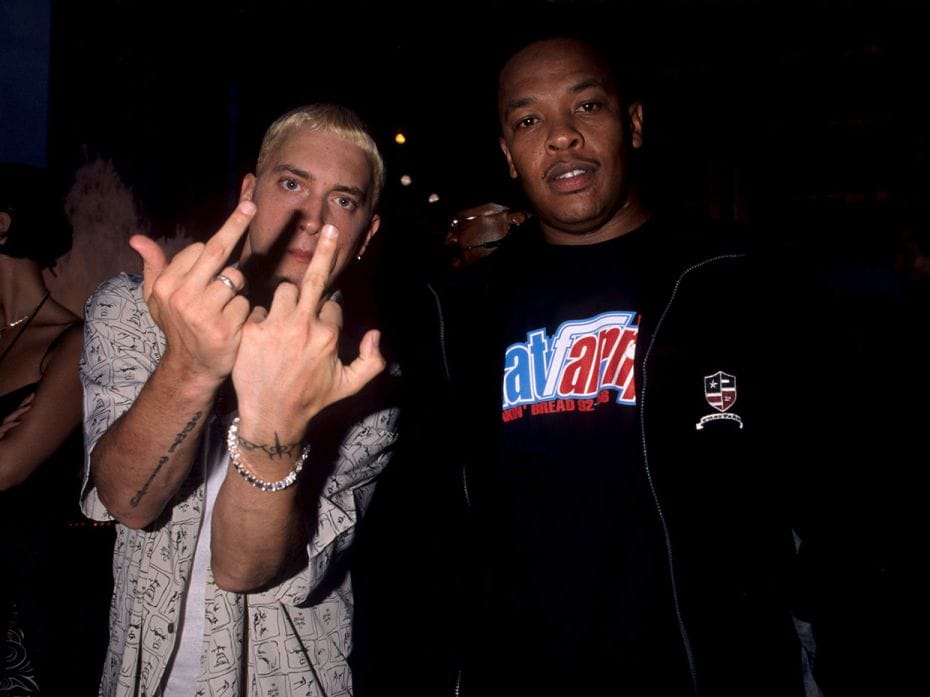
Image by : Kevin Mazur Archive/WireImage
Eminem and Dr Dre at the 1999 MTV Video Music Awards, New York City. Dr Dre's legacy is a summation of the extent to which hip-hop has become a producers' medium, as a creative and a commercial force. Dr Dre's protégé Eminem became perhaps the world's biggest pop star when his 'Lose Yourself' won the Academy Award for best song. Eminem's '8 Mile' (2002), the loosely autobiographical film in which he starred, enjoyed enormous popular and critical success. Hip-hop had become the best-selling genre of popular music in the United States by the early 2000s. The genre had truly become pop music.
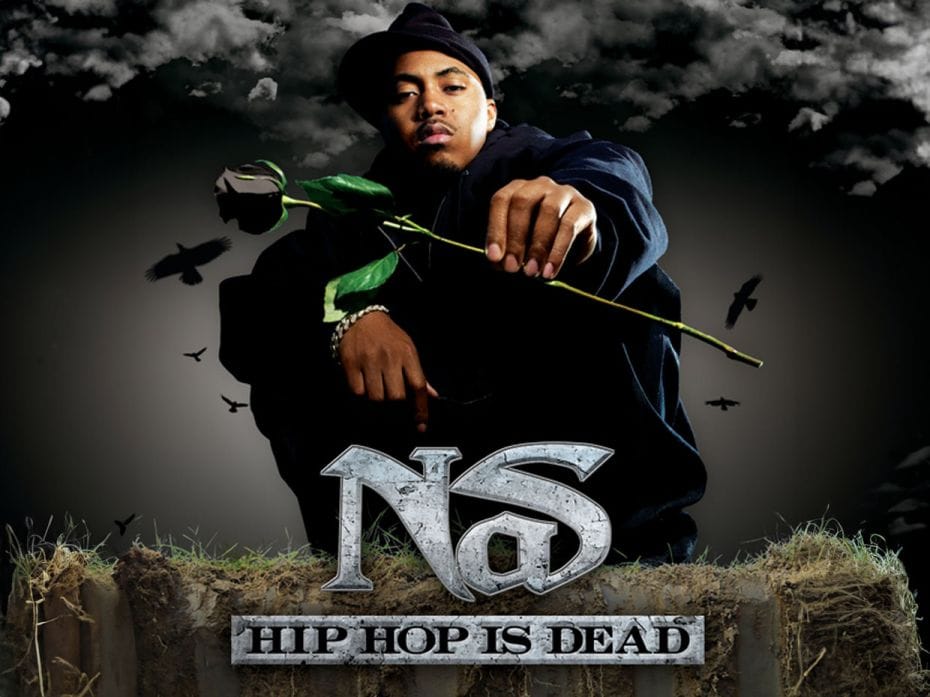
Image by :
Going global, hip-hop has weathered its highs and lows: from generating huge sales of products in the fashion, liquor, electronics, and automobile industries popularised by hip-hop artists to the crisis brought on by the advent of digital downloading. What about the widespread sense that hip-hop's verbal dexterity and poetry were waning as simplistic hip-hop styles crowded out the popularity charts? The dissatisfaction with the state of mainstream hip-hop led Nas to release an album titled Hip Hop Is Dead in 2006. Speaking of the album, Nas said, "I thought the title was enough; to say it's dead, it was to say, 'I don't know where to begin, I don't know where to start. But at least I'll name it this, and we'll see where it goes from there.'"





